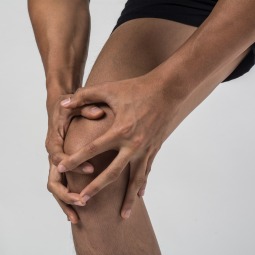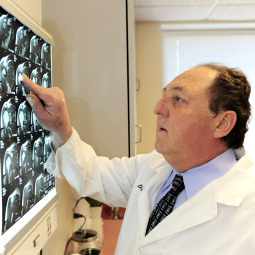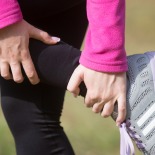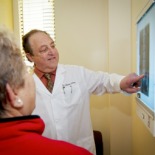Silver Orthopedics Center Encino - Treatments & Services
For Appointment or Consultation, Call: 818-784-9593
Dr. Dan Silver has performed tens of thousands of arthroscopic surgeries during his 30+ years in the field of orthopedics. With specialties in the areas of knee, shoulder, elbow, ankle and hip surgeries, Dr. Silver brings unmatched experience to the operating room, resulting in predictable, positive results for his patients. Common injuries that are successfully repaired through surgery include:
KNEE
Meniscus Tears

Meniscus tears don't always occur during sports. In older patients, there may be a progressive weakening of the cartilage, which renders the menisci more susceptible to a tear. A simple twist of the knee, when standing from a sitting position, can easily result in a meniscus tear.
Non-surgical treatments options will always be considered first. However, more often than not, arthroscopic surgery will be required to fix the cartilage. This outpatient surgery generally takes less than an hour and typically requires just a few small incisions to allow Dr. Silver's camera to view the tissues of the knee joint. He is able then to identify the location of the tear, and repair or remove the damaged areas. Dr. Silver will then prescribe a course of rehabilitation, including strengthening exercises, designed to get your range of motion back as quickly as is safely possible.
Anterior Cruciate Ligament (ACL) Tear & Reconstruction
ACL tears are extremely common, and are generally concurrent with damage to the meniscus, cartilage or other ligaments inside the knee. As one of the four primary ligaments in your knee, the Anterior Cruciate Ligament runs diagonally in the front of the knee. This critical ligament is responsible for the back and forth movement of your knee. It also serves to prevent the tibia (shinbone) from slipping in front of the femur (thighbone). The ACL is a critical ligament, and a tear can result in knee instability.
When the ACL tears, your knee may seem to "pop," or "give out." Soon after you will notice stiffness and swelling, accompanied by pain and a feeling of knee instability. It is not a good idea to ignore these symptoms, as it is unlikely that this tear will heal on its own.
Dr. Silver's evaluation of your knee, using X-rays and MRIs when necessary will determine the grade of your tear. Ligament tears are categorized as first, second, or third degree tears. The grade of your tear will determine whether non-surgical treatment is an option. In some instances, resting, icing, compression, elevation (R.I.C.E) coupled with bracing and/or oral medications may prove to alleviate your pain. However, more often than not, arthroscopic surgery will be required to repair the torn ligament. In some cases, an arthroscopically assisted ACL Graft may be necessary to fully reconstruct the ACL.
Recovery times from ACL surgeries will vary, and in nearly all cases will require bracing for a period of time ranging from weeks to months.
When the ACL tears, your knee may seem to "pop," or "give out." Soon after you will notice stiffness and swelling, accompanied by pain and a feeling of knee instability. It is not a good idea to ignore these symptoms, as it is unlikely that this tear will heal on its own.
Dr. Silver's evaluation of your knee, using X-rays and MRIs when necessary will determine the grade of your tear. Ligament tears are categorized as first, second, or third degree tears. The grade of your tear will determine whether non-surgical treatment is an option. In some instances, resting, icing, compression, elevation (R.I.C.E) coupled with bracing and/or oral medications may prove to alleviate your pain. However, more often than not, arthroscopic surgery will be required to repair the torn ligament. In some cases, an arthroscopically assisted ACL Graft may be necessary to fully reconstruct the ACL.
Recovery times from ACL surgeries will vary, and in nearly all cases will require bracing for a period of time ranging from weeks to months.
Posterior Cruciate Ligament (PCL) Tears
Posterior Cruciate Ligament (PCL) tears are less common than ACL tears, because many times people are unaware of them. PCL tears generally do not cause the extreme level of knee pain and knee instability as other ligament tears. However, the pain of a complete PCL rupture can be severe, often resulting from a sports injury or an auto accident where you fall directly on a bent knee.
Fortunately, more often than not PCL tears can be treated with non-surgical methods, if the damage is an isolated injury. However, PCL tears are often found in conjunction with other knee injuries, such as damaged meniscus, or ACL tears. If you continue to be plagued by knee instability, arthroscopic surgery using a graft for reconstruct the PCL may be warranted.
Fortunately, more often than not PCL tears can be treated with non-surgical methods, if the damage is an isolated injury. However, PCL tears are often found in conjunction with other knee injuries, such as damaged meniscus, or ACL tears. If you continue to be plagued by knee instability, arthroscopic surgery using a graft for reconstruct the PCL may be warranted.
Medial Collateral Ligament (MCL) Tears
Like ACL tears, Medial Collateral Ligament (MCL) tears can be very painful. The Medial Collateral Ligament helps to control the sideways movement of your knee, keeping it safe from unusual or dangerous movement.
Knee instability and knee pain are common symptoms of an MCL tear. However, these tears generally occur after the outside of the knee is struck, and the pain is typically directly above the ligament on the inside of the knee. Like ACL tears, this type of ligament tear is also graded in terms of first degree, second degree, or third degree, based upon the severity of the damage. While a first degree sprain may only require bracing coupled with other non-surgical treatment methods, a complete MCL rupture will almost certainly require arthroscopic surgery to repair and remove the damaged tissue.
Knee instability and knee pain are common symptoms of an MCL tear. However, these tears generally occur after the outside of the knee is struck, and the pain is typically directly above the ligament on the inside of the knee. Like ACL tears, this type of ligament tear is also graded in terms of first degree, second degree, or third degree, based upon the severity of the damage. While a first degree sprain may only require bracing coupled with other non-surgical treatment methods, a complete MCL rupture will almost certainly require arthroscopic surgery to repair and remove the damaged tissue.
Lateral Collateral Ligament (LCL) Tears
The Lateral Collateral Ligament is injured less often than the MCL. This ligament which runs along the outside of the knee is typically injured by a strike or hit to the inside of the knee. Knee pain, swelling and sensitivity along the outside part of your knee are typical symptoms of and LCL tears. Athletes engaging in hockey, soccer, or skiing may be more prone to LCL tears. Your knee may feel like it has "locked" or otherwise feels unstable. Depending upon the severity of the injury, many LCL tears can be treated with non-surgical methods, such as bracing. For complete tears (ruptures), surgery is often required, and the rehabilitation may include physical therapy and ongoing bracing.
Patellar Mal-Alignment
When properly aligned The Patella (knee cap) should be directly aligned straight down from what is known as the femoral groove (groove in the femur). However, due to a variety of reasons, the patella may be mal-aligned. Sometimes it's merely tilted in the groove, sometimes the shape and height of the patella is abnormal, and sometimes overall health issues such as obesity play a role. When this happens, knee pain, knee instability, and a feeling of "grinding" are common symptoms.
Occasionally the patella may become completely dislocated from the groove. This mal-alignment can be treated in a variety of ways depending upon the severity and the cause of the problem. Bracing, strengthening exercises, intra-operative electrical stimulation (EMS), and arthroscopic patellar shaving, are some of the methods Dr. Silver will consider to alleviate your knee pain.
Occasionally the patella may become completely dislocated from the groove. This mal-alignment can be treated in a variety of ways depending upon the severity and the cause of the problem. Bracing, strengthening exercises, intra-operative electrical stimulation (EMS), and arthroscopic patellar shaving, are some of the methods Dr. Silver will consider to alleviate your knee pain.
Arthritis
Arthritis of the knee is common and can occur as a result of age, with wear and tear on the joints and tendons (also called osteoarthritis). It is caused by the wearing away of cartilage of the joint, and patients may be predisposed to arthritis as a genetic condition. But it can also occur due to an impact or trauma to the knee, and may occur in conjunction with meniscus tears or any ligament strains, sprains and tears.
Arthritis can be moderate to severe, and orthopedic treatment for knee arthritis will vary greatly. In some cases, trigger point injections will alleviate the pain. Anti-inflammatory oral medications may help, and lifestyle changes such as losing weight are generally recommended. In some cases however, arthroscopic surgery may be required in order to repair and/or remove loose bodies, repair cartilage, and reduce your swelling or joint pain.
Arthritis can be moderate to severe, and orthopedic treatment for knee arthritis will vary greatly. In some cases, trigger point injections will alleviate the pain. Anti-inflammatory oral medications may help, and lifestyle changes such as losing weight are generally recommended. In some cases however, arthroscopic surgery may be required in order to repair and/or remove loose bodies, repair cartilage, and reduce your swelling or joint pain.
SHOULDER
Rotator Cuff Tear
Rotator Cuff tears are very common, and very successfully treated with arthroscopic surgery. Dr. Silver's camera will magnify the tear in the rotator cuff, so that he can quickly diagnose the areas needing repair. Repair to the rotator cuff essentially involves the removal of the inflamed or damaged tissue which is impinging on the tendon.
The tendon may need to be sutured on its own, or may require suture anchors to reattach the tendon to the bone. These suture anchors will not need to be removed, as they will dissolve on their own over time.
Rotator cuff surgery is an outpatient surgery, typically requiring post operative bracing, in the form of a sling, followed by strengthening and physical therapy to achieve full range of motion again.
The tendon may need to be sutured on its own, or may require suture anchors to reattach the tendon to the bone. These suture anchors will not need to be removed, as they will dissolve on their own over time.
Rotator cuff surgery is an outpatient surgery, typically requiring post operative bracing, in the form of a sling, followed by strengthening and physical therapy to achieve full range of motion again.
Impingement Syndrome & Bursitis

When moving arms overhead, bursitis and shoulder impingement will cause moderate to severe pain, and left untreated will likely progress into more severe pain. Common symptoms of bursitis and impingement include frozen shoulder, shoulder "popping," and radiating pain down the length of the arm.
Dr. Silver may prescribe anti-inflammatory medications, trigger point injections, physical therapy and/or intra-operative electrical stimulator (EMS) treatments prior to arthroscopic surgery. Depending upon the severity of the impingement however, surgery may be the fastest route to recovery. In many cases arthroscopic surgery will provide for a shorter recovery time, with greater mobility results, and minimal scarring. During this outpatient surgery, any bone spurs or calcium deposits will be removed, and the bursa will be cleaned and cauterized to alleviate your pain due to inflammation.
Biceps Tendonitis
Biceps Tendonitis may first appear as a shoulder "popping" or "snapping." Other symptoms include elbow pain, or pain when trying to turn your arm so that your palm is up. Similarly, sudden sharp shoulder and upper arm pain can be a symptom of Biceps Tendonitis. Biceps Tendonitis is commonly caused by aging and overuse or in some cases by injury.
The shoulder pain resulting from Biceps Tendonitis occurs when one of the two tendons that attaches the biceps muscle to the bone of the shoulder become worn down, or torn.
Non-surgical methods of treatment may work for some patients. But for those patients who need to reacquire full range of motion of the shoulder, Dr. Silver will recommend minimally invasive arthroscopic surgery to reattach the tendon to the bone of the shoulder.
Non-surgical methods of treatment may work for some patients. But for those patients who need to reacquire full range of motion of the shoulder, Dr. Silver will recommend minimally invasive arthroscopic surgery to reattach the tendon to the bone of the shoulder.
Shoulder Instability
When the upper arm bone is forced out of the shoulder socket, as in a shoulder dislocation, from a sudden injury or trauma, or from overusing the shoulder, it becomes more likely to happen again. Because the shoulder has become loose, it is prone to slipping out of place repeatedly, thus resulting in shoulder instability. However, shoulder instability can occur without ever having a shoulder dislocation.
Loose ligaments and tendons in the shoulder can also result in shoulder instability, bringing about recurring shoulder pain. Dr. Silver will discuss conservative care options, such as physical therapy and oral anti-inflammatory medications with you. He will also discuss minimally invasive arthroscopic surgery, to repair torn or stretched ligaments, resulting in reduction of pain, and a more stable shoulder.
Loose ligaments and tendons in the shoulder can also result in shoulder instability, bringing about recurring shoulder pain. Dr. Silver will discuss conservative care options, such as physical therapy and oral anti-inflammatory medications with you. He will also discuss minimally invasive arthroscopic surgery, to repair torn or stretched ligaments, resulting in reduction of pain, and a more stable shoulder.
Shoulder Dislocation/Subluxation
Shoulder dislocation is the result of the head of the humerus (upper arm bone) completely popping out of the socket of the shoulder blade. Severe pain typically follows and in many cases patients will need to be medicated to ease the pain before the shoulder can be manipulated back into place.
Shoulder subluxation occurs when the humerus has partly but not entirely popped out the socket. Consider it a partial shoulder dislocation. Both of these injuries may be initially treated in an Emergency Room.
Dr. Silver will wish to see you following a shoulder dislocation to identify any additional injury to the shoulder as a result, and to prevent further shoulder pain and injury. In many cases non-surgical treatments such as oral medications and immobilization will be enough to allow the injury to heal. Because patients are more susceptible to recurring dislocations or subluxation after the initial injury, surgery may be recommended to repair ligaments as a preventative measure.
Shoulder subluxation occurs when the humerus has partly but not entirely popped out the socket. Consider it a partial shoulder dislocation. Both of these injuries may be initially treated in an Emergency Room.
Dr. Silver will wish to see you following a shoulder dislocation to identify any additional injury to the shoulder as a result, and to prevent further shoulder pain and injury. In many cases non-surgical treatments such as oral medications and immobilization will be enough to allow the injury to heal. Because patients are more susceptible to recurring dislocations or subluxation after the initial injury, surgery may be recommended to repair ligaments as a preventative measure.
Shoulder Separation
A shoulder separation is not the same as a dislocated shoulder or shoulder subluxation. A separated shoulder instead is the result of an injury to the acromioclavicular (AC) joint. A hard fall directly on the shoulder is generally to blame for shoulder separation. In these cases, the fall causes the ligaments around the AC joint to become torn, and the weight of the arm then further irritates the clavicle that has been separated from the shoulder blade.
Shoulder separation may sometimes be treated with non-surgical methods, including trigger point injections, anti-inflammatory oral medication, and immobilization. However, depending upon the severity of the tear in the ligaments, surgery is often the best solution. Arthroscopic surgery performed as an outpatient surgery will need to be followed up with strengthening exercises as part of your rehabilitation plan.
Shoulder separation may sometimes be treated with non-surgical methods, including trigger point injections, anti-inflammatory oral medication, and immobilization. However, depending upon the severity of the tear in the ligaments, surgery is often the best solution. Arthroscopic surgery performed as an outpatient surgery will need to be followed up with strengthening exercises as part of your rehabilitation plan.
Labrum Tear
The labrum is responsible for the stabilization of the shoulder. It also serves as the attachment point for ligaments necessary for various shoulder functions. After a fall, or other trauma to the shoulder, symptoms of a labrum tear may appear in shoulder "popping," grinding, a feeling of being locked, and overall shoulder instability.
Dr. Silver will look first to conservative care, including the possible usefulness of anti-inflammatory oral medication, trigger point injections, and physical therapy in alleviating your pain. However, arthroscopic surgery typically provides the greatest relief with the least amount of risk, so that you can quickly regain full mobility of your shoulder. Repairing the labrum may require suture anchors, which will dissolve on their own over time. Following this outpatient surgery, Dr. Silver will prescribe you with a customized rehabilitation program, to expedite your recovery.
Dr. Silver will look first to conservative care, including the possible usefulness of anti-inflammatory oral medication, trigger point injections, and physical therapy in alleviating your pain. However, arthroscopic surgery typically provides the greatest relief with the least amount of risk, so that you can quickly regain full mobility of your shoulder. Repairing the labrum may require suture anchors, which will dissolve on their own over time. Following this outpatient surgery, Dr. Silver will prescribe you with a customized rehabilitation program, to expedite your recovery.
ELBOW
Lateral Epicondylitis (Tennis Elbow)
Medial Epicondylitis (Golfer's Elbow)
When the tendons that join the muscles on the inside of the elbow become inflamed from overuse or repetitive motion, Medial Epicondylitis (Golfer's Elbow) will appear with inner elbow pain and tenderness. Golfer's elbow is most often treated non-surgically with anti-inflammatory oral medication, bracing, resting, and trigger point injections. In rare cases, arthroscopic surgery will be used to repair the tears in the tendons. This outpatient surgery is minimally invasive, and Dr. Silver will provide appropriate follow-up care and instructions for rehabilitation.
Ulnar Nerve Entrapment (Cubital Tunnel Syndrome)
The Ulnar Nerve is essentially your "funny bone." When this nerve, which runs from the collarbone all the way to your little fingers, becomes compressed near the elbow, tingling or numbness in the fingers may result, accompanied by elbow pain and/or a feeling of weakness in your grip. Dr. Silver will explain all of the treatment options available including oral anti-inflammatory medication, trigger point injections, physical therapy, and in some cases surgery. Although this surgery can be done as a same-day procedure, it may require an overnight stay. Bracing (with a splint) is typically required for a period of time following surgery.
ANKLE
Ligament Tears (Sprains)
A sprained ankle is the result of the ligaments of the ankle being torn. Sprained ankles are incredibly common, and many heal with non-surgical treatments such as non-steroid anti-inflammatory medications, bracing and physical therapy. More severe tears however may require surgery and casting for a period of weeks. This may be supplemented by the use of an intra-operative electrical stimulator (EMS).
Fractures (Broken Ankle)

Many ankle fractures will require surgery including metal fixation to allow the bones to heal. Recovery time from a broken ankle can be weeks or months, and will often require a casting or bracing period, along with the use of crutches.
Ankle Impingement Syndrome
Ankle Impingement Syndrome occurs when tissues and bone spurs in the ankle joint become trapped between bones and causes pinching. Symptoms of ankle impingement syndrome include ankle pain, particularly when the ankle is flexed upward or pointing downward. Anti-inflammatory oral medication may provide relief, but an arthroscopic cleanout of the scar tissue may be required for complete relief. Following surgery Dr. Silver may prescribe several weeks of physical therapy, along with temporary bracing.
Ankle Instability
Ankle instability occurs when the outside ligaments of the ankle have been stretched. The most common symptom is a feeling that the ankle is unstable. There are plenty of strengthening exercises that Dr. Silver may recommend. However in some cases, surgery to shorten, reattach or reconstruct torn ligaments may be necessary. Reconstruction of the tendon may require the use of a tendon graft. This outpatient surgery may require further physical therapy, and bracing for several weeks following the surgery.
HIP
Snapping Hip Syndrome
Many arthroscopic surgeons shy away from hip surgeries. Dr. Silver is not one of them. Patients suffering from Snapping Hip Syndrome report audible "snapping" or "popping" sounds, accompanied by hip pain, when the joints of the hip are flexed or extended. Commonly caused by tendons catching on bone during movement; snapping hip syndrome can be treated with non-surgical methods, as well as arthroscopic surgery. During arthroscopic surgery, Dr. Silver will be able to relax the tendons, or reattach the tendons depending upon the source of your pain.
Labral Tears & Loose Bodies

Articular Cartilage Surface Damage
The hip's cartilage is subject to damage from an accident, or a general wearing down as we age. When gradual, this damage may only cause minor pain. However, in some cases the progression is so severe that there is bone-on bone contact, resulting in a great deal of pain. In mild cases of surface damage, anti-inflammatory oral medications and a modification of lifestyle will alleviate the pain. In other cases, arthroscopic surgery, utilizing cartilage grafts will be necessary, to reduce your hip pain.
